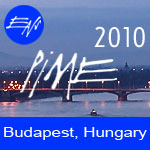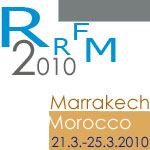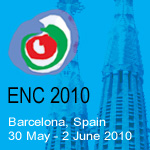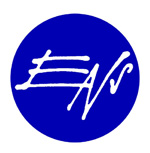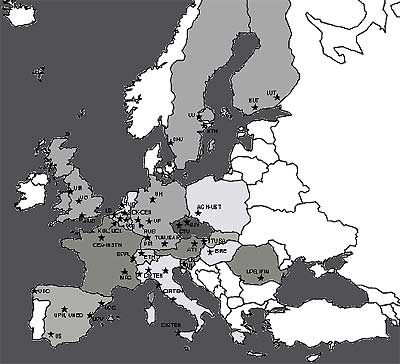 |
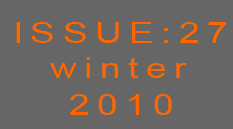 |
|
|
Table 1: Nuclear Education Networks in Europe |
|
|
|
|
|
|
|
|
|
|
With reference to Figure 1, an important part of the knowledge integration is research and training. Within the European context there have been significant activities in these areas, examples of which are given in Table 2.
Table 2: Research/Training Programmes |
PERFECT10: resources are assigned for training in advanced numerical simulation tools for irradiation damage. The proposed numerical tools allow students to perform “virtual irradiations” on “virtual reactors”, with the aim to analyse the resulting evolution of mechanical properties and microstructure. |
SARNET11: an education and training programme is foreseen directed at young scientists. The aim is to consolidate European excellence in the long-term in the areas of experimental and numerical simulation as well as in level 2 probabilistic safety assessment methods and in mitigation techniques related to severe accident management. |
RAPHAEL12: a number of major industrial issues are discussed in connection with future industrial needs and energy policies (e.g. high temperature heat and electricity supply, natural resource preservation). Special attention is paid to education in innovative nuclear hydrogen production technologies and in communication. |
EUROTRANS13: there are 17 universities, represented by the ENEN Association. At least 5% of the budget is assigned to PhD students, with additional funding reserved for E&T (detailed course programme in www.enen-assoc.org). It is also worth mentioning the launch of a doctoral school on E&T by the ENEN association in this EUROTRANS project. |
|
ESDRED:14 ("Engineering Studies and Demonstration of Repository Designs"), the partners (waste management agencies and technological R&D organisations) organise training sessions of broad interest. One of their general aims is to fabricate and test prototypes of technologies for deep geological disposal of high level radioactive waste (such as spent fuel or vitrified waste), for backfilling and for sealing disposal cells or drifts. |
RISC-RAD:15 (“Radiosensitivity of Individuals and Susceptibility to Cancer induced by ionizing RADiations”), there are courses on “quantitative radiation risk modelling” and on “ethics in biological experiments”. |
EURANOS:16 (“EURopean Approach to Nuclear and radiOlogical emergency management and rehabilitation Strategies”), training is organised in connection with “real time on-line decision support (RODOS)” for emergency management and rehabilitation strategies. |
Some activities are embedded in large infrastructure programmes and a selection of those proposed for the Framework 7 programme are given in Table 3.
Table 3: Embedded Programmes Covering Research/Training |
1 - ACSEPT / Actinide reCycling by SEParation and Transmutation: The overall goal is to advance the European integration in the fields of separation techniques, and actinide chemistry. Strong links will be established with the direct or derived actions of the FP-6 Network of Excellence ACTINET. |
2 - GETMAT / Gen IV and Transmutation MATerials: The overall goal is to motivate a new generation of material scientists to study and deepen the open challenges in the materials science for nuclear applications. In addition workshops in collaboration with OECD/NEA and IAEA will be organized. |
3 - CARBOWASTE / Treatment and Disposal of Irradiated Graphite and Other Carbonaceous Waste: The overall goal is to develop the scientific competence and human capacity that will guarantee the availability of suitably qualified researchers, engineers and employees in this specific field of legacy waste management. |
4 - F-BRIDGE / Basic Research for Innovative Fuel Design for GEN IV: The overall goal is to share the modelling and experimental methodologies in fuel materials sciences that will be developed during the project. The project will organise two summer schools demonstrating to young scientists and engineers how basic research in material science can contribute to the understanding of fuel behaviour under irradiation and to the selection and development of advanced fuels. |
5 - SEDENTEXCT - Safety and Efficacy of a New and Emerging Dental X-ray Modality: The aim is the acquisition of key information for sound & scientifically based clinical use of Cone Beam Computed Tomography (CBCT) & to use them to develop guidelines dealing with justification, optimisation & referral criteria and to conduct dissemination and training for users of CBCT. |
6 - MADEIRA - Minimizing Activity and Dose with Enhanced Image quality by Radiopharmaceutical Administration: The goal is to improve 3D nuclear medicine and molecular imaging technologies and with this the quality of the diagnostic information obtained & to reduce the amount of radioactive material to be administered. |
7 - ORAMED - Optimization of Radiation Protection of Medical Staff: The goal is to improve standards of protection for medical staff for procedures resulting in potentially high exposures and to develop methodologies for better assessing and reducing exposures to medical staff in interventional radiology (IR). |
In addition, under Framework 7, ENEN-III has been funded to develop Euratom Fission Training Schemes (EFTS). Members of the ENEN Association will work on a selected number of nuclear sector skills profiles, develop training profiles and establish pilot schemes whereby the concept of a Passport for Continuous Professional Development may be created to meet industry requirements.
A review of the European context for ETKM would not be complete without considering the framework in which it will sit for the future. This framework exists at the higher level within European Strategic Energy Technology Plan (SET plan)and specifically with respect to the nuclear option, in the Sustainable Nuclear Energy Technology Platform (SNE-TP 18) with a detailed Strategic Research Agenda (SRA) addressing Generation II, III and IV reactor systems. The SRA will supported by cross-cutting activities in the deployment strategy and education, training and knowledge management areas. In parallel other initiatives that will influence the context for ETKM are the European Nuclear Energy Forum (ENEF 19) and the High Level Group (HLG). Amongst other activities, ENEF will consider on-line sources for nuclear education, possibly a schools curriculum for basic nuclear technology understanding and the concept for creating a European nuclear observatory. The HLG is composed primarily of senior officials from national nuclear regulatory or nuclear safety authorities. It will be important for ETKM providers to address future developments by this group in order to support a common integrated approach to nuclear safety culture.
Endorsement of ETKM activities within the European Union is of the utmost importance and this has been given by the Council of the European Union in their Conclusions on the Need for Skills in the Nuclear Field [6]. Of particular note is the importance the Council places on an integrated nuclear skills framework within Europe as given in the quote from [6] below.
In particular, THE COUNCIL INSISTS that the appropriate conditions must be created for mutual recognition of nuclear professional qualifications throughout the European Union; ENCOURAGES the Member States and the Commission to establish a "review of professional qualifications and skills" in the nuclear field for the European Union, which would give an overall picture of the currentsituation and enable appropriate solutions to be identified and implemented. Such a review could pave the way for drawing up a pan-European chart of skills and knowledge relating tooccupations in the nuclear field; acceptance of this could lead to the production of a European handbook of skills, experience and professional qualifications, which would facilitate the mobility of employees within the EU.
Other influential organizations that are contributing significantly to the ETKM area are the Nuclear Energy Agency (OECD/NEA) and Joint Research Centre (JRC) and most importantly, the International Atomic Energy Agency (IAEA). A quote from the IAEA is therefore appropriate.
“As the nuclear workforce ages and retires, and support decreases for university programmes in nuclear science and engineering, knowledge management is becoming critical to ensuring safety and security, encouraging innovation, and making certain that the benefits of nuclear energy - related to human health, food and agriculture, water management, electricity supply, and a host of other applications - remain available for future generations.”
Mr. M. El Baradei, Director General of the IAEA, 2000
The Present Position
Within nine years of the OECD/NEA report, Nuclear Education and Training…… cause for concern, an enormous amount of activity has been undertaken in the area of ETKM as summerised above. It may seem as though nuclear ETKM is in its renaissance period but we must not be complacent. Indications are that the “cliff edge” of nuclear workforce retirements is drawing ever closer and when this impact is taken together with the growth needed in the workforce to meet the global demand for nuclear power, the challenges facing the ETKM sector remain, but at least we are heading in the right direction. While this paper has focused on the European context, there are international ETKM developments under progress by Euratom and the IAEA in all global sectors.
References
[1] Nuclear Education and Training….Cause for Concern, OECD study, 2000
[2] Nuclear Human´s Element, American Nuclear Society Report, 2007
[3] Proceedings from ENS conference NESTet, 2008
[4] ENEN Association (www.enen-assoc.org)
[5] ENETRAP (www.sckcen.be/enetrap/)
[6] Skills in the Nuclear Field, EU Council, 2 December 2008, st 15406.
15see www.riscrad.org/
| |
